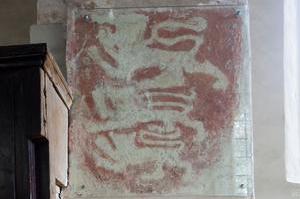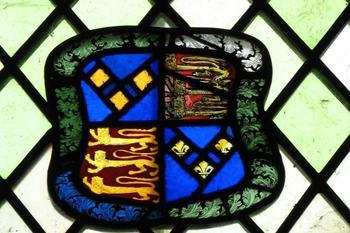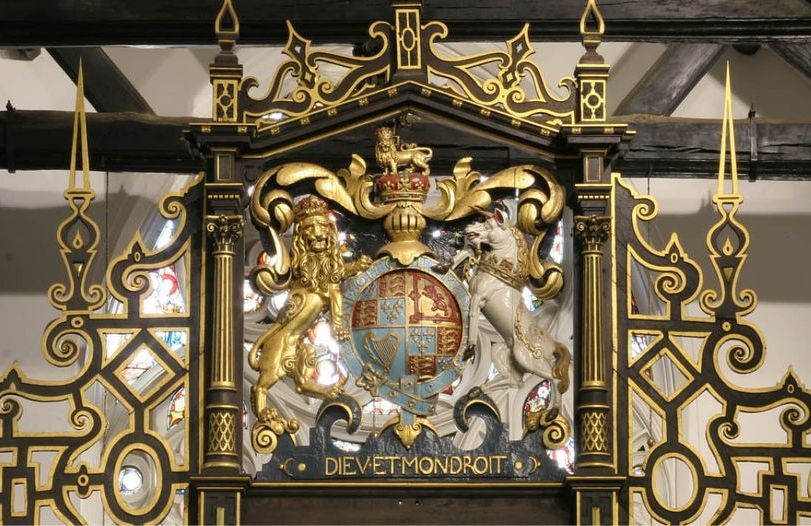Revealing Royal Arms
His Majesty the King's Coronation could not be a more appropriate time to consider a fascinating, though often overlooked, feature of churches: the Royal Arms.
His Majesty the King's Coronation could not be a more appropriate time to consider a fascinating, though often overlooked, feature of churches: the Royal Arms.
At one time we could have seen them displayed in nearly every Anglican Church in the land. Now we only see them in about 15% of our churches, but fortunately we have nearly one hundred magnificent examples in our care.

It is generally agreed that the Royal Arms date from the reign of Richard I when he used three lions on his Great Seal in 1190. Lions had been used by the Normans to signify royalty, but it was not until the 12th century that a consistent English heraldic system emerged.
The first Royal Coat of Arms was Richard I’s Great Seal initially used to be a single lion rampant, or two lions, but it was permanently changed to three in 1190. From that date onwards we have always had three lions of England on our Royal Arms and, more recently, incorporated into our everyday lives. Richard I was also known as Richard ‘The Lion Heart’ or Coeur de Lion for his bravery. He chose lions as they were considered to be Kings of the beasts and were known for their great strength, ferocity and majesty. Lions were also symbols of the resurrection, as it was thought that lion cubs were born dead, but brought to life after three days when their father breathed on them.
St James’ church, Cameley, in Somerset, (pictured above) contains our only surviving example. There is a vivid red shield bearing the three lions on the wall supporting the chancel arch. The outline of the three lions is still very clear: their curling tails and powerful raised front paws are particularly distinct.
How were they used?
Royal Arms were mainly used for official purposes or identity, both on the battlefield and later in heraldic tournaments.
They were also displayed, particularly prominently, on the magnificent royal monuments of Westminster Abbey, which were meant to impress and to highlight not only the importance of the deceased monarch, but also the importance of their foreign alliances (often cemented by their marriage to a suitable Queen).
The Royal Arms first began to appear in churches to show the status and ancestry of the deceased who were not of royal lineage. They were displayed on tiles, stained glass and monuments. For example, the alabaster monument at All Saints church, Harewood to Sir William Gascoigne, Lord chief Justice, who died in 1419, displays a beautifully carved relief of the Royal Arms. His first wife was descended from the Plantagenet Kings.
Role Change
However; the meaning and importance of Royal Arms changed from 1534, during the reign of Henry VIII.
After the break with Rome, the Royal Arms not only showed the importance of lineage and marriage alliances, but were specifically commissioned and placed in churches on their own.
This was to remind the clergy and people that Parliament had confirmed the King as Supreme Head of the Church of England. It became vitally important to remind everyone that this drastic step had been taken.

Although there was no legal requirement, churchwardens would have been encouraged to erect Henry VIII's Royal Arms in the most prominent position in their churches, such as over the chancel arch. This emphasis and attitude carried on with succeeding monarch until its decrease in fashion after Queen Victoria’s reign.
Withcote Chapel (pictured left) in Leicestershire contains another excellent example in stained glass. This glass can be dated specifically to 1536 as Jane Seymour’s badge is included. Jane was Henry VIII’s third wife, but only for five months during 1536 as she died two weeks after giving birth to Edward VI.
This wonderful stained glass, in the Flemish style, constantly makes use of the Royal Badges and Arms. The fine technique is very similar in style to King's College, Cambridge and have been attributed to the King's glazier Galyon Hone.

